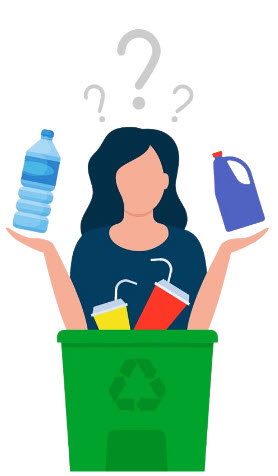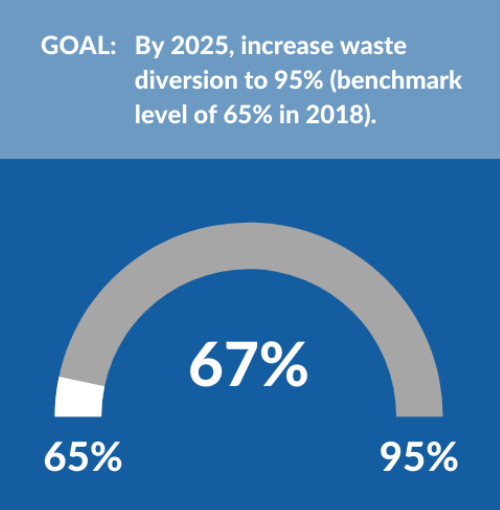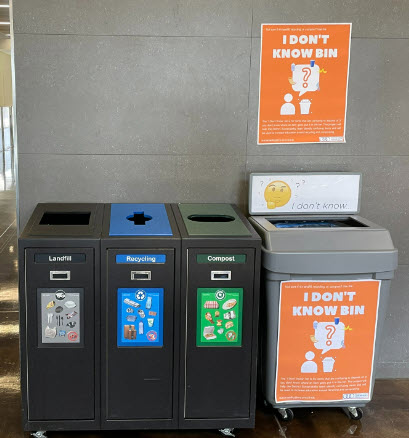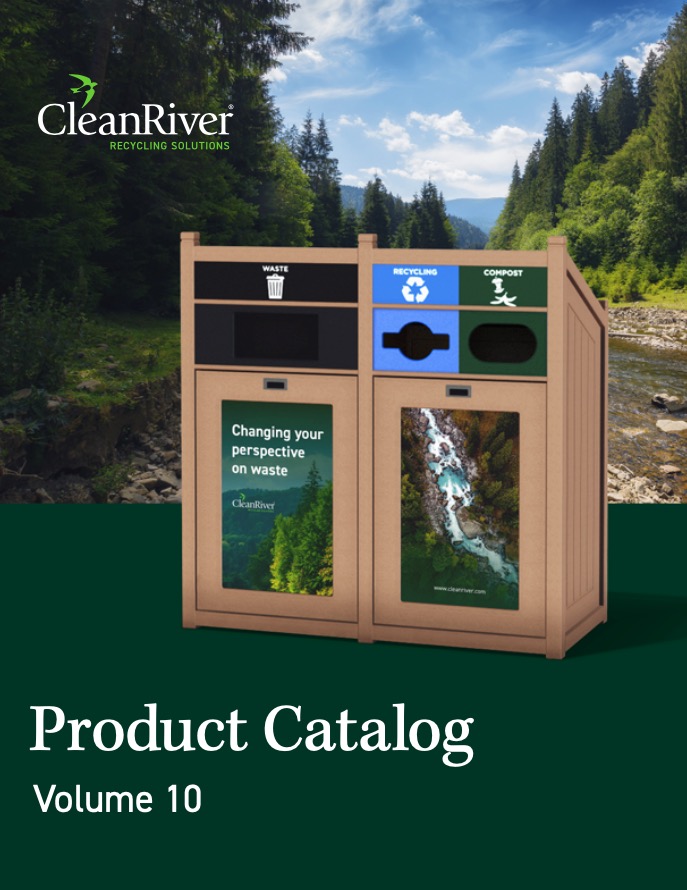School recycling programs and commercial recycling bins have become the norm. But waste diversion continues to be a persistent issue. Why? Recycling can be confusing. There is a lack of consistency in how programs are run. Accepted materials can vary by location and there is mixed messaging as to what can and cannot be recycled. As a result, 92% of Americans don’t understand recycling bin labels.


This confusion makes it more challenging to improve waste diversion rates. It can also lead to greater contamination within recycling bins.
A waste diversion case study: The “I Don’t Know” bin
Recently, CleanRiver Recycling Solutions worked with a well-known college in California to increase their waste diversion rate by creating the innovative “I Don’t Know” bin. The college has an existing school recycling program, and they are committed to achieving zero waste by 2025. This goal requires 95% of waste to be diverted from landfill into compost and recycling streams. In 2021, they were at just 67% diversion. Improvements were needed.


Goals and objectives of the “I Don’t Know” school recycling bin project
The goal of the ‘I Don’t Know Bin’ project is to find out which materials the College’s community is having trouble sorting into the correct waste stream (compost, landfill or recycling), and improve waste signage and communications based on the results of the exercise.
The program has four clear objectives:
- Create communication materials based on results
- Share results with the wider campus community
- Update waste signage based on results
- Reduce sources of unnecessary waste where it is identified
Get some ideas for how to improve your school recycling program by using these 10 tips for campus recycling success.
The issue: contamination in school commercial recycling bins
Contamination was one of the biggest barriers to improving waste diversion at the school. This is anything that is in the commercial trash can that shouldn’t be there. This can include garbage and other recycling items. The school rule is no more than 10% contamination. If a commercial trash can has more than 10%, the entire bag is landfill.
The top contaminants were:
- Black plastic
- Greasy pizza boxes
- Plastic film
The solution: adding the “I Don’t Know” bin into the school recycling program
To cut down on contamination and to help students and staff better understand how to recycle, the school implemented the “I Don’t Know” bin.


The commercial trash can is meant to be used when people are not sure if an item is garbage, recycling or compost. Rather than having a person guess, they are encouraged to place an item in the “I Don’t Know” bin.
This allows the team to assess and identify the items that are creating confusion. The information can be used to offer education about how to recycle more effectively.
Read about other CleanRiver Campus and School Recycling Bins and Programs
Key findings of the “I Don’t Know” bin recycling program
After running the recycling program, 5 main items consistently ended up in the “I Don’t Know” bin:


These findings provided valuable knowledge so that the college can improve their labels and opening shapes. Here are the biggest takeaways:
- The compost bin apertures are too small for common compostable items such as greasy pizza boxes. (With dozens of opening shape options CleanRiver has the solution for this.)
- There is confusion about masks, older signs didn’t include PPE
- There’s an opportunity to reduce single-use compostable plastics
- There’s an opportunity to capture reusable items like hangers
Use your old bin to help you recycle easier. You can hold recyclables in the smaller old bin before putting them in your larger recycling cart or use them as a yard waste container.
The school updated the signs to remedy the recycling bin issues and improve waste diversion
This case study provides invaluable insights into how all school and commercial recycling programs can become more efficient. If your school or office building is experiencing recycling issues, consider a similar program to identify and clear up confusion about your recycling program. It can help to reduce contamination and increase waste diversion rates.
Looking for more recycling program tips and tricks? Check out these other blogs from CleanRiver Recycling:
- Conduct your waste audit with CleanRiver’s waste audit toolkit
- Book of recycling graphics
- 5 Solutions For Schools to Improve Recycling Rates
- The Ultimate Guide to Recycling Programs
CleanRiver Recycling provides a variety of innovative, flexible, and customizable recycling solutions with over 1,440 colour, opening shapes and label options. To determine the right solution to meet your needs, use the CleanRiver product selector.
If you have additional questions that weren’t answered in this blog post, please call us at 1-866-490-2585 or email solutions@cleanriver.com.
